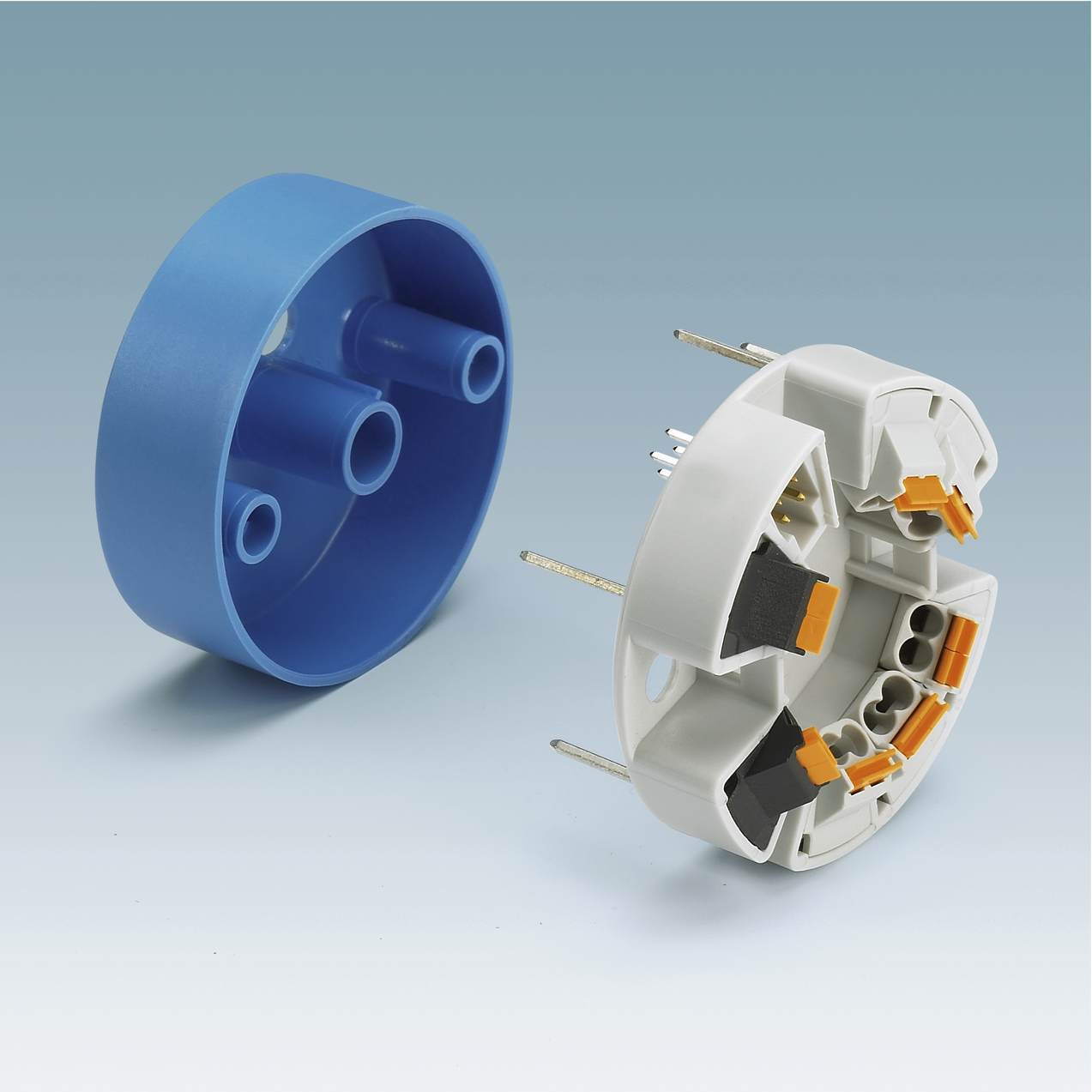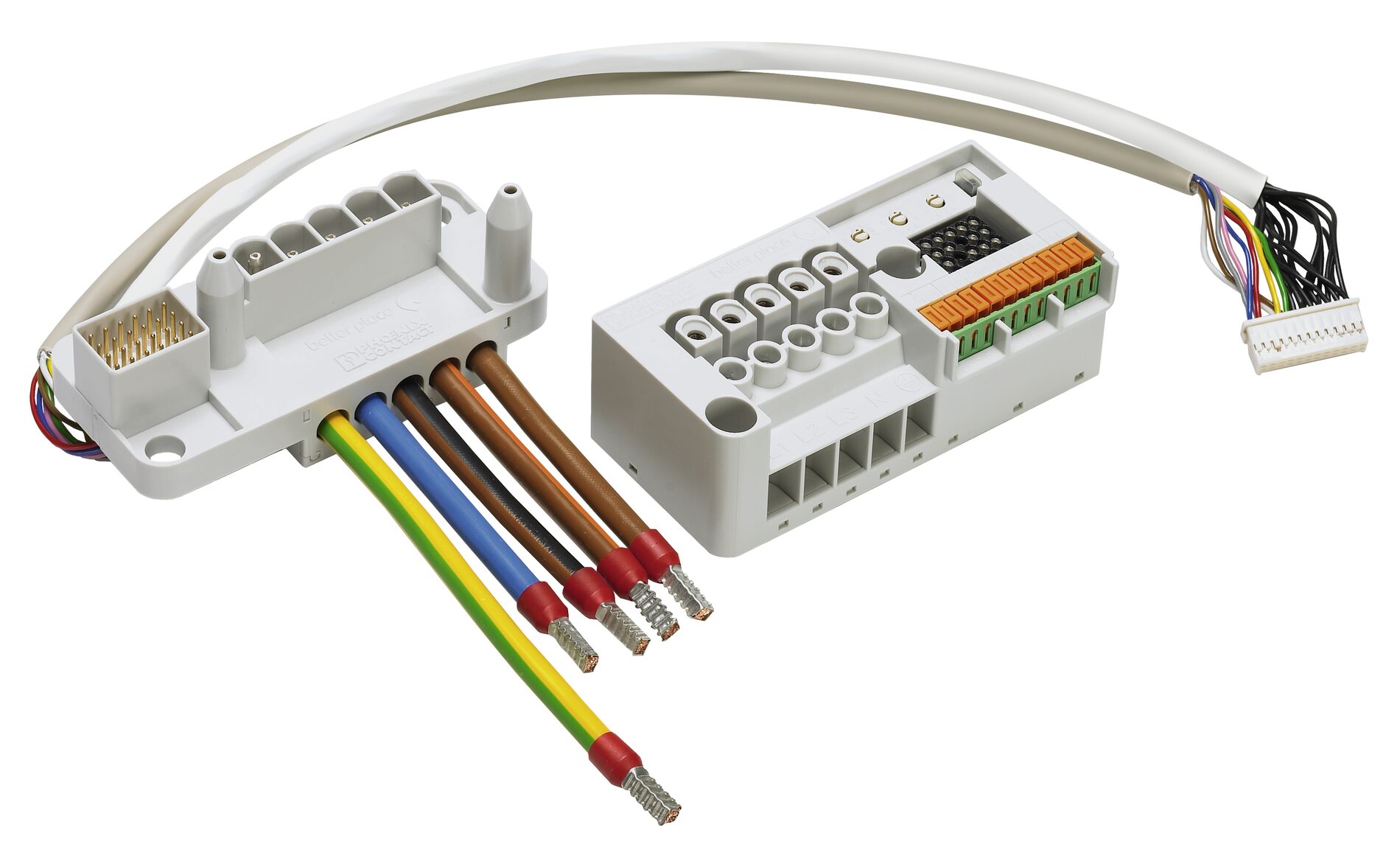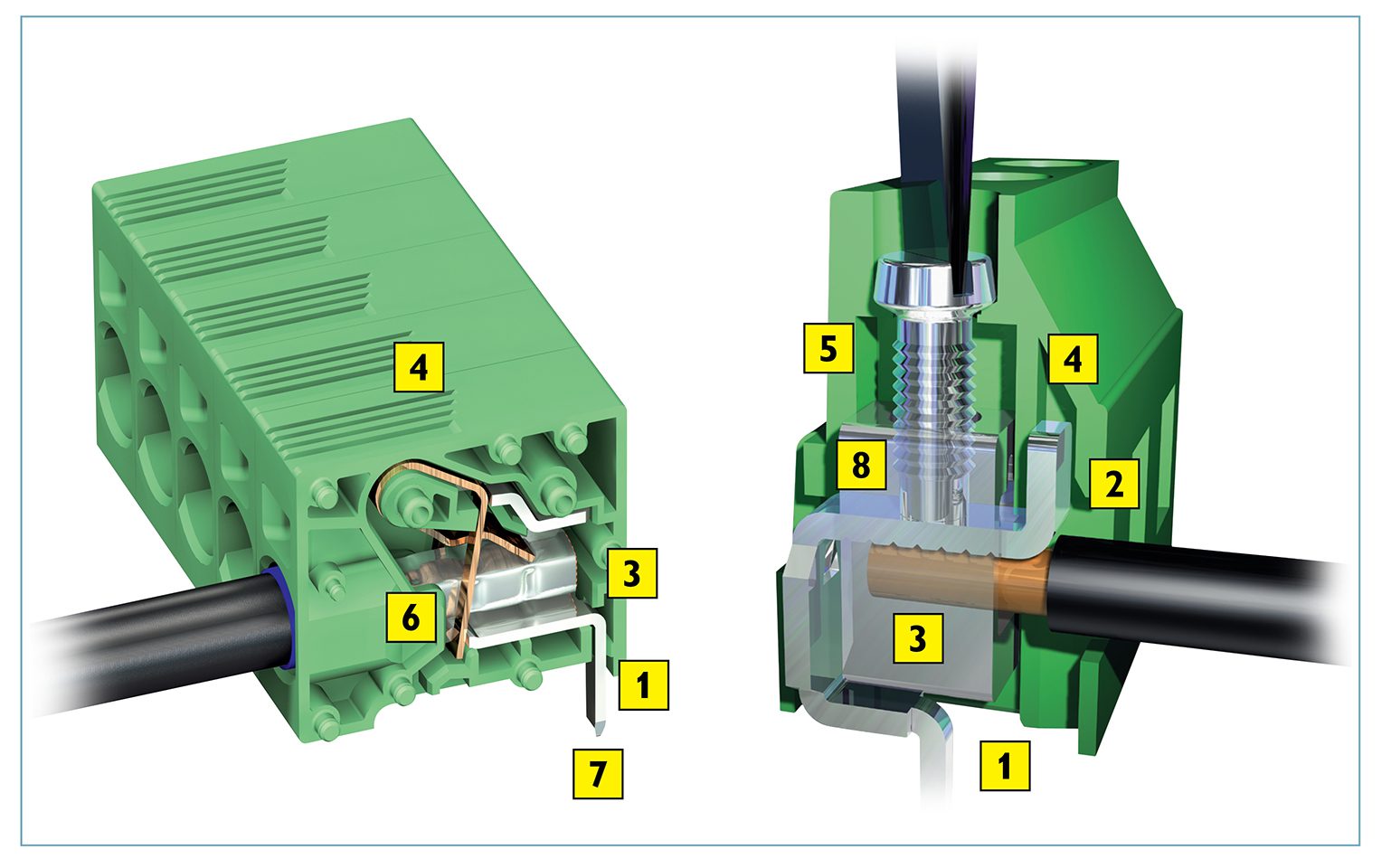Beyond the Basics: Customer Specific Connectors
Every element of a connector contributes to the success of a design. When selecting an application-specific connector or designing a custom solution, consider how each part contributes to system performance and longevity.

The quality of the connection points can be one of the most important aspects of electronic device design. It is critical to strategically select reliable, application- and customer-specific connectors to help eliminate performance failures or potential installation issues. The proper connector can provide quality and peace of mind, with reassurance that there will not be faults in the field. It can also reduce manufacturing costs and make wiring easier. Yet, in many instances, connectivity is the last item addressed.
In today’s cost-competitive landscape, there is a tendency to make cost the primary driver of connector selection. While cost obviously needs to be taken into consideration, it is also important to understand the quality of the materials and construction of the connector in relation to its cost. This will ensure connectivity reliability during the device’s lifetime.
Also, when comparing connectors from different manufacturers, make sure to compare apples to apples. Subtle material or component differences can impact the overall quality of the connector and the cost. Examining the various basic attributes of the connector is a good place to start.
Connector housing
Many different materials can be chosen for connector housing. Consider these key factors: operating environment, temperature exposure, flammability ratings, and the manufacturing process being used (such as wave solder, SMT, and pin-in-paste).
A simple, good example would be a PCB-mounted terminal block for an industrial application. In this instance, quality manufacturers will typically use a nylon material like polyamide. Benefits of a material such as this include V0 flammability rating, high tensile strength, recyclability, operating temperatures up to 125° C, excellent aging characteristics, high chemical resistance, and high strength.

External and internal elements of connector design are equally important to performance when designing a new product.
Metal components
The metal components of the connector encompass the pins, sockets, contacts, and clamping mechanisms. Similar to the available plastics that can be used for the connector housing, the options for metal materials are vast. For the same PCB-mounted terminal block mentioned above, consider a screw-clamping mechanism with PCB pins to be wave-soldered to the board.
In this instance, a plated copper alloy is an excellent choice for the PCB solder-pin due to its strength, ability to withstand corrosion, excellent electrical conductivity, and thermal properties. For the clamping mechanism, consider the metals that would be the best fit for this application. In this particular connector, the use of a copper alloy is logical because using similar metals reduces corrosion and maintains a consistent, quality connection. Additionally, different metals expand and contract at different rates with temperature changes. Using the same metals for components that will interact within a circuit ensures a quality contact throughout the connector’s use.
It’s all in the details
After examining the basic characteristics of the components that make up a connector, the next step is to identify potential enhancements to these basic material choices, as well as the value-added services that support the application requirements. Specific requirements for the application environment, potential standards, and the manufacturing process all impact the choice of plastic housing material.
Those requirements may be that the material is UV tolerant, able to withstand sterilization processes, or able to withstand the higher temperatures associated with the reflow soldering process. In addition to the selection of the base material, other options might include custom housing colors, shielding considerations, strain relief, and perhaps the ability to add printing or marking on the housing body itself. These can all help make the connector more user-friendly and a better fit for the application.
Similarly, various attributes can be chosen for the metal components. Considerations may include plating to address specific cycle life or environmental needs, alternative base metals that can reduce cost, selectively loading contacts to assist with creepage and clearance needs, and alternative pin lengths. Some of the basic application criteria that help guide the selection process are whether the connection is for power, signal, or data; the voltage and current; and AWG size of the wires being terminated.
When is a custom connector the best option?
Even with all the choices available, a clear-cut, off-the-shelf solution that meets an application’s needs might not be available. In this scenario, a customer-specific connector solution might be the best way to ensure the application’s specific goals, problems, and needs are satisfactorily addressed.
With a customer-specific connector solution, a quality manufacturer will try to use as many basic, off-the-shelf subcomponents as possible. This helps minimize costs, since only a portion of the connector has a unique design that requires customization.

When an off-the-shelf solution does not meet your needs, it might be time for a custom connector. (Pictured: Phoenix Contact custom connectivity solutions)
In many instances, this solution is a custom, molded housing that meets the dimensional constraints and material requirements of the application but uses standard clamping mechanisms and pins/sockets. However, the solution could also incorporate custom pins, termination options, or other items such as custom shielding around an existing connector body. The ultimate solution could perhaps even be the creation of a hybrid connector that allows the designer to integrate both power and signal functions in a smaller overall connector, as opposed to using multiple connectors to accomplish the same task. When thinking about custom connectivity solutions, every element should be considered.

The elements of fixed single-piece design
The diagram above shows the many aspects that go into a high-quality connector.
- Pin placement – straight, evenly spaced solder pins for easy placement on PCB.
- Current carrying bar – quality materials for a low-resistance current path.
- Quality alloys – selected for performance, based on design. Using similar metals for equal expansion/contraction in thermal changes prevents loosening of wire termination.
- Housing design – for performance and production consistency.
- Captive screws – prevent screws from falling out while in the open position.
- Spring push-in technology – fast wire insertion, without tools, for solid and ferruled stranded wires, the fastest termination available.
- Tapered pin – improves ease of placement on the PCB by preventing contact stubbing.
- Reakdyn principle – mechanical locking of screw prevents loosening due to vibration or thermal expansion.
Creating an application-specific connector involves a consideration of many variables. Additional practical considerations center on manufacturing, including component materials, tooling strategies, and assembly automation. As these decisions can greatly affect product costs, select a connector manufacturer that can present options to meet both tooling and end unit cost expectations. In addition, select a manufacturer that uses a quality controlled and proven design process roadmap so that no details are missed along the way. This results in a defect-free, long-lasting product.
A manufacturer of quality connectivity components adheres to consistent quality guidelines, structured development processes, and industry-leading test methods to meet customer needs. Partnering with such a supplier ensures their off-the-shelf or custom solution will meet expectations for specific design requirements.
To learn more, visit Phoenix Contact.
Like this article? Check out our other Custom and Quality articles, our Connector & Cable Special Topics Market Page, and our 2023 and 2024 Article Archives.
Subscribe to our weekly e-newsletters, follow us on LinkedIn, Twitter, and Facebook, and check out our eBook archives for more applicable, expert-informed connectivity content.
- Beyond the Basics: Customer Specific Connectors - March 12, 2024





